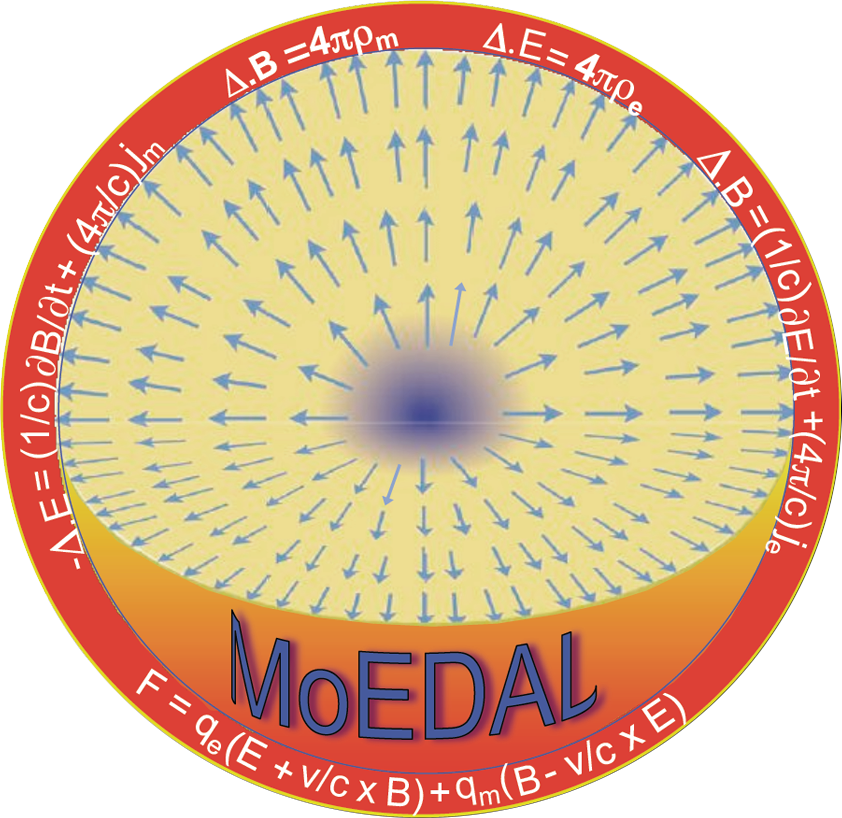Among the most interesting and comprehensively studied possibilities for observable new physics is supersymmetry (SUSY). At the most general level we have the minimal supersymmetric Standard Model (MSSM) that incorporates “soft” SUSY-breaking interactions which are consistent with gauge and Poincaré invariance, and solve the hierarchy problem. The general MSSM allows for a number of sparticle SMP candidates. In models with neutralino dark matter, the NLSP can be long lived if its decay phase space is small or zero, mimicking the case of the neutron in the SM.
In the MSSM the stop, the stau, the chargino, and the gluino can be SMPs. When gravity is included, as in supergravity models, the gravitino can be the LSP, depending on its mass. If the gravitino is light, the NLSP will then often be long-lived due to the smallness of the gravitational coupling. For supergravity models with a long-lived stau NLSP see [36]. In models with gauge mediation such as GMSB, the gravitino is very light (< 1 keV) and hence the LSP for any relevant choice of parameters. A long-lived stau is not the only SMP possibility in GMSB. If the mixing and consequently the mass splitting in the stau sector is not too large (small tan β ≤ 8 ), then the selectron and the smu may be nearly mass-degenerate (co-NLSP) with the stau and hence can simultaneously be SMPs. There is also a very large space of possible non-minimal models. Of particular interest here are SUSY GUT extensions of GMSB in which the coloured messengers are naturally much heavier than their weak counterparts, resulting in a gluino NLSP/LSP , depending on the gravitino mass.
In anomaly mediated SUSY-breaking (AMSB) (for a part of the parameter space) the neutralino is the LSP, and hence the chargino can be long-lived. In other regions the stau can be the LSP. In gaugino-mediated SUSY-breaking (gMSB), the MSSM is embedded in a 5-dimensional compactified braneworld setup. The only non-vanishing soft SUSY breaking terms at the compactification scale, Mc, are the gaugino masses. In the original models, Mc = MGUT , which gives a stau LSP. The smuon and selectron are typically slightly heavier, due to the smaller mixing in the first two generations, but they can also be SMP candidates.
In models of Universal Extra Dimensions (UED) all the fields of the SM, including both matter and forces, are allowed to propagate in some number of extra dimensions, usually aken to be one or two. In the simplest models, all the KK modes of the light SM particles (the photon, gluon, and first generation fermions) may be sufficiently long-lived to also be SMP candidates. Finally, we note that a GMSB-like phenomenology with a stable KK graviton and a meta-stable next-to-lightest KK particle, e.g. has also been discussed. More exotic possibilities for supersymmetric SMP candidates also exist, in particular in models where the MSSM gauge groups and particle content are extended to include more superfields. A recent example is a variant of the so-called Fat Higgs model, based on the MSSM with an extra confining SU(3) symmetry, the Fat Higgs with a Fat Top [47]. In this model, quasi-stable exotic chiral superfields (i.e. a complex scalar and a fermion) appear, which are charged under a global symmetry, which makes them approximately stable. The strongly interacting ones are probably outside the range of colliders, but there is a weak-scale electrically charged multiplet whose members have SMP properties.
In warped extra dimensions with GUT parity [48][49], the combination of extra dimensions and an effective TeV scale supersymmetric grand unification results in KK towers not only of the SM gauge and Higgs fields, but also of their SUSY-GUT partners, including XY bosons and coloured Higgs multiplets. A parity can be chosen such that the MSSM particles are ven and their GUT partners odd, hence the lightest GUT-odd particle (LGP) is stable or long-lived. In the earliest model, the LGP is typically a light isospin-up (-down) colour triplet XY gaugino, with electric charge -1/3 (-4/3), but in the more recent models a wider range of possibilities are open. In a more recent five dimensional model of dynamical SUSY-breaking (DSB), TeV scale exotic scalars with the quantum numbers of GUT XY bosons appear, so-called xyons. If a condition similar to R-parity holds in the DSB sector, these states are also long-lived. Their precise quantum numbers depend on the details of the DSB in general they are both coloured and charged. In the simplest SU(5) case they lie in a colour triplet isospin doublet with electric charges Q = Å}1/3,Å}4/3.
Finally, there also exist a few more general ideas for possible (quasi-)stable BSM particles, including long-lived leptoquarks and additional (generations of) fermions. The latter can either be straightforward additions to the SM generations, e.g. a 4th generation with 4th flavour approximately conserved, or they can have a non-SM like structure. Mirror fermions are extra fermions whose right-chiral members lie in SU(2) doublets while the left-handed ones are singlets, i.e. opposite to the SM. A vector-like generation is comprised of an extra SM generation together with its mirror, as e.g. in N = 2 supersymmetric models. Another example of a SMP is given by heavy quarks belonging to higher representations of SU(3C). A color sextet of quarks Q has been proposed in order to explain the dynamical breaking of the electroweak symmetry. The quark sextet, taking the role of a condensate, forms a doublet of weak SU(2)L (U D). The lightest state of these quarks may be stable or it may decay into normal quark and long-lived leptons after being hadronized in an exotic colourless hadron.
